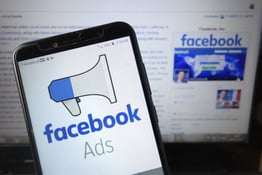If you ever want to join an endless fight online, just dive into the great hashtag debate. It may be small potatoes against bigger debates (vaccines, the New York slice vs. Chicago deep-dish, whether Tony died in “Sopranos” finale). But hashtag spats have stood the test of time. People have strong opinions around hashtags and how best to use them on social media.
Not only that, but the right answers remain a moving target. Instagram metrics and algorithms change as frequently as you wash your socks. What was true about hashtags last year may be irrelevant now — or, worse, may be hurting your content as you build out your restaurant's Instagram presence.
In social media, you should always be ready to test, test, and then test some more. But some rules stand the test of even the longest debates. We’re here with the #protips you need to cut through the confusion and become a hashtag #master, all the better to run your restaurant's social media.
What is a hashtag?
A hashtag is a combination of words, letters, numbers (and even emojis!) preceded by the # symbol (think #love, #happyplace, #mondaymotivation, #nofilter etc., ad infinitum). They show up as hyperlinks, so they’re clickable, allowing users to categorize and to discover content. By connecting social media posts by perhaps thousands or millions of people, hashtags let you start a conversation or easily find and join one. You’ll see brands joining loose conversations, creating their own Instagram hashtags for brands, or participating in hashtag campaigns — national days like #NationalFrenchFryDay, trend campaigns like #ShareACoke, or socially driven campaigns such as #MeToo.
Fun fact: The unfancy name for # is a pound sign. A fancier name is an octothorpe, for its eight little points. Neat, right?
Where do you use hashtags?
Instagram and Twitter. On Facebook, hashtags are clickable and helpful with discovery, but do little to propel your content. People simply don’t search Facebook for hashtags much.
Should I make a branded hashtag?
Absolutely. Creating a hashtag unique to your brand lets companies and organizations enhance their message while allowing a wider audience to join and further the conversation. You may notice many brands strategically include their hashtag in their bio, their posts, and their Instagram Stories (don’t forget you can use hashtags there too!). The goal is to encourage customers to use the hashtag whenever they post about the brand, to alert you to their user-generated content (UGC). The more you share the posts your customers create, the more others will likely do the same. It works out to free advertising for the brand, dramatically increasing reach and engagement, and encouraging other users to join the party — perhaps, even, by sharing hashtags on Instagram.
How many hashtags should I be using on Instagram?
Here’s where things get personal. While you should always keep testing to see what works best for your particular content, a good rule of thumb is no more than three hashtags per post. The number of hashtags you use will depend on your brand and the topic at hand. But long gone are the days of plopping a paragraph of hashtags on each post. And more important, general hashtags like #food, #foodporn, #restaurant can actually work against you. For one, they have vast followings, making it difficult to stand out. Also, Instagram has cracked down on “bots” and spam accounts, and a barrage of hashtags can be a trigger for the algorithm.
Instagram caps the number of hashtags you can use on a post at 30; on Stories, the cap is 10. But don’t use anywhere near that many. It’s best to think of hashtags as you think of content itself: quality over quantity. A few niche hashtags and a branded hashtag is all you really need.
Where should I add hashtags to Instagram posts?
Odds are you’ve noticed on your feed a ton of different hashtag styles. And that’s just what they are: a style choice. It doesn’t matter whether you drop hashtags at the end of the post, add a few dots and drop them way below, or post them in the comments.
Oh, and for the love of analytics, please, #don’t #write #your #post #like #this or and place hashtags in the middle of sentences, or even worse, use them in place of full sentences like #weeathereeveryweek #cantwaittogoback. This is clutter. Select hashtags carefully. The fewer you use on a post, the more effectively Instagram will categorize your content, and the better your users will be able to tell what you’re actually talking about.
What do I need to know about hashtags and content discovery?
Back in the early days of the ’gram, hashtags were the only way to discover content. And while they’re still a reliable tool, Instagram has added keyword search and algorithms to anticipate what people want to see. The good news is, your captions, topics, and even video content are now searchable. The bad news is, hashtag skills don’t get you as far when you’re trying to reach new people.
Instagram now has an entire “Discovery” section that automatically surfaces content the platform thinks you will engage with based on your behavior and searches. Reels have been an especially effective way for businesses to have their content discovered as Instagram tends to push these to the top. And guess what? Some of the most watched Reels in history didn’t use a single, solitary hashtag.
[Photo by Roman Odinsov at Pexels]





